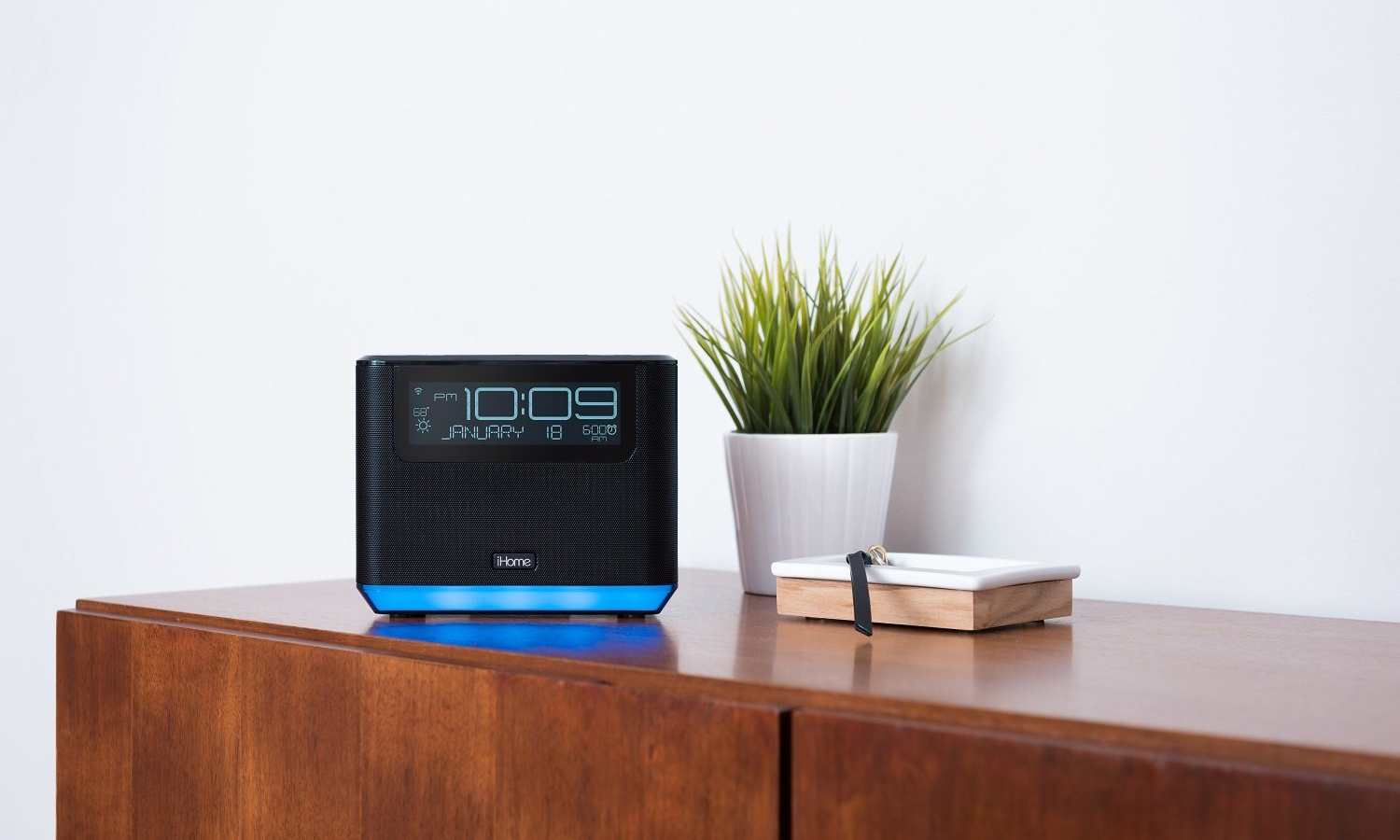Tom's Guide Verdict
Alexa is built into this clever but pricey alarm clock, which also has physical buttons to let you control smart home devices and get some more shut-eye.
Pros
- +
Great audio quality
- +
Physical snooze button
- +
Smart home controls
- +
Colorful LED lights
Cons
- -
Smart buttons can only control iHome plugs
- -
Limited alarm tones
- -
No AM/FM radio
- -
Expensive
Why you can trust Tom's Guide
For the past few months, I've been using the Amazon Echo Show as my bedside alarm clock. It has great speakers, shows me the weather for the week and wakes me with an alarm in the morning. However, if I want to get an extra 15 minutes of shut-eye, I have to say, "Alexa, snooze!" — which is not exactly a relaxing thing to do.
iHome's iAVS16 speaker ($149) is a game changer for bedside clock radios. It not only has a snooze button that works with Alexa but also buttons that let you control smart home devices, streaming music and more. Plus, it costs $50 less than the Echo Show.
Design: Utilitarian
The iHome iAVS16 has a functional design, but it doesn't really stand out. The black speaker is roughly rectangular in shape, with rounded corners. It's wrapped in a metal grille, with a large LCD display on the front. The bottom edge of the speaker has LEDs that change color; I guarantee you'll be spending time playing with all its color options.

At 7.5 x 5.8 x 3.6 inches, the iHome is taller than it is wide, so it didn't take up too much space on a nightstand — certainly not as much as the iHome iAVS1, which, at 6.7 x 6.7 x 2.2 inches, left much less room for my wallet and keys.
You don't get the 7-inch display as on the Echo Show, but the iHome's large but monochrome LCD panel gets the job done. This screen is not too far removed from your old-school alarm clock: The time dominates the center, and on the left as you're looking at the iHome is an icon showing the current temperature and weather conditions. Below the time are the date and alarm, if one is set.
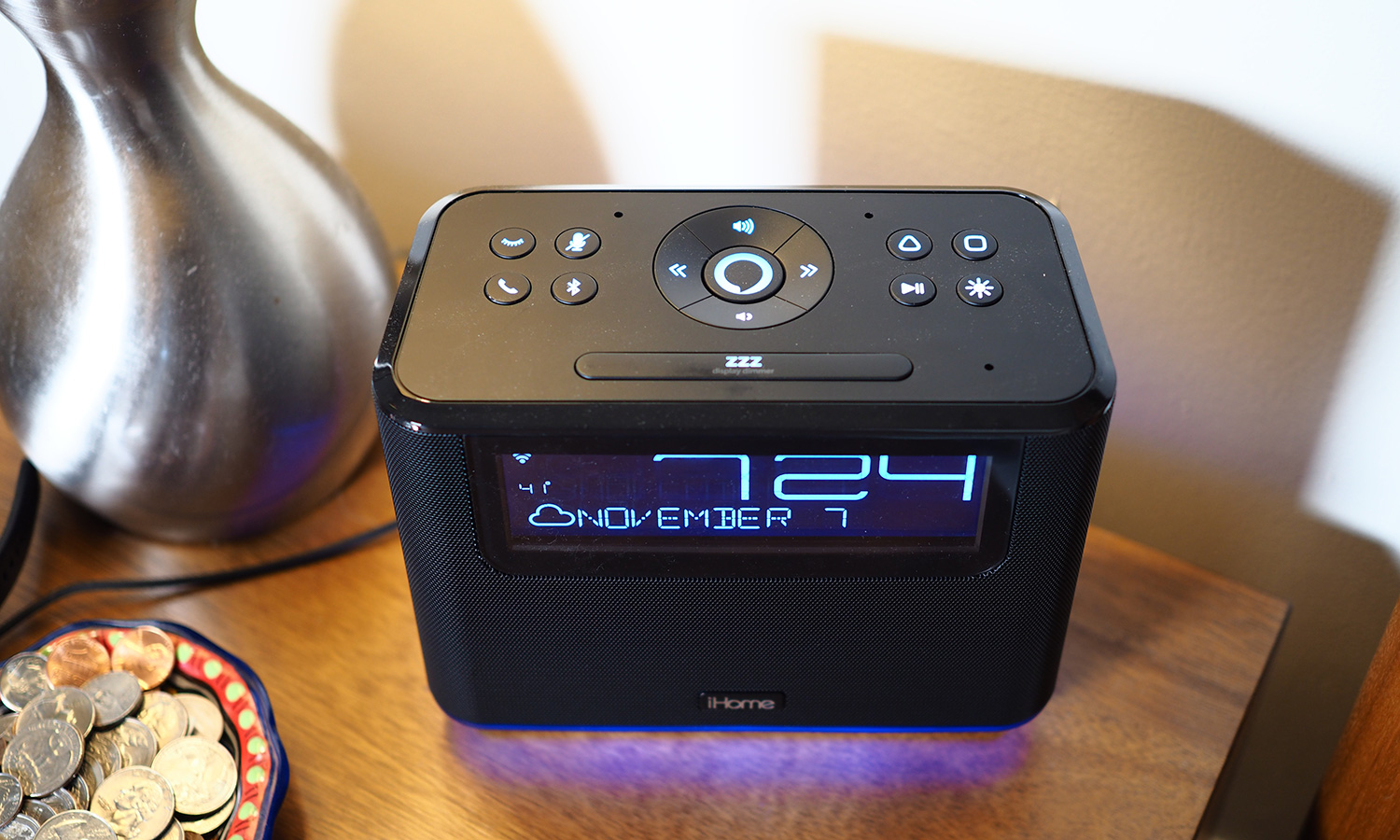
The top of the iAVS16 has a huge array of buttons. In the middle is a circular Alexa button, surrounded by four music control buttons: two for volume (up and down), and two for advance/back. On the left side of the speaker are four more buttons: Bluetooth, Phone call/answer, Alexa mute, and Sleep; this latter button lets you create a scene for when you want to shut your eyes; you can tell the speaker to play music or adjust your lights for a set period of time before shutting everything off.
On the top right are four more buttons. Two can be set to control audio, iHome smart plugs and the color on the bottom of the speaker. A third button controls play/pause for music, and the last button changes the lighting mode of the LED on the bottom of the speaker.
Around the back is the power plug and a 2.1-amp USB port for charging your smartphone or tablet.
Setting an alarm
The feature of the iHome that most drew my attention is that you can set an alarm using Alexa but then use the iHome's physical buttons to snooze or turn off the alarm. It's something that's been a long time coming, and while it's welcome, it could still use some tweaking.
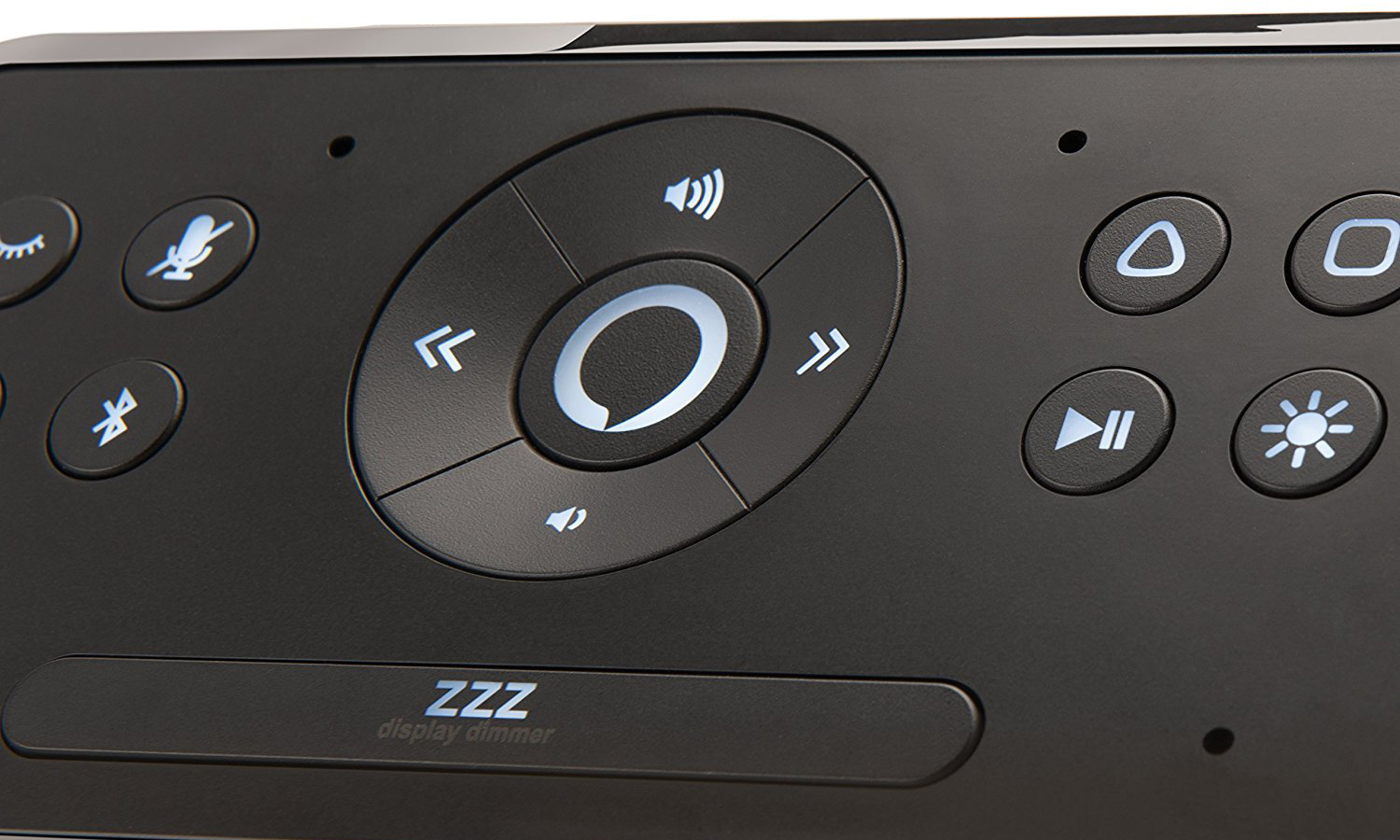
When you say, "Alexa, set an alarm," you're telling Alexa to set an alarm on the iHome, not in Alexa itself. So, when the alarm goes off, you don't get Alexa's not-at-all jarring tone. Instead, you have to select one of the iHome's four tones: Bumblebee, Greensleeves, Twilight or Valkyyie, all of which are annoying.

Fortunately, you also have the option to wake up to an iHeartRadio station or Spotify channel. In the case of iHeartRadio, this requires you to listen to a particular station or have some favorited before they'll appear as options in the Alarm settings. The "Pre-wake" feature slowly turns on the iHome's lights 10 minutes before the alarm goes off.
The feature that most drew my attention was that you can set an alarm using Alexa but then use the iHome's physical buttons to snooze or turn off the alarm.
Being able to press a snooze button instead of mumbling "Alexa, snooze!" was amazing — so amazing, in fact, that I overslept several days. It was just too easy to slap the button on the iHome. Unfortunately, you can't set the length of the snooze.
Music and Audio Quality: Surprisingly good
Most clock radios aren't known for their audio prowess, but the iHome pleasantly breaks the stereotype with strong, powerful sound. Acoustically, I would say the iHome is on a par with the Echo Show. The speaker delivers plenty of bass, and it can get pretty loud without distorting the sound, too.
When I first played "Brandy," by Looking Glass, the song sounded a bit muddy. Thankfully, there are basic but effective equalizer settings in the iHome app: one for bass, and one for treble. Boosting the latter fixed the muddiness and made the vocals a lot clearer.
The subtle inflections of Miles Davis' trumpet in "Bye Bye Blackbird" came through cleanly, while John Coltrane's glissandos up and down his sax were nearly as impressive; I could have gone for a bit more treble, though.
From then on, I was greatly pleased with what I heard from the iHome. It's a lot more than I expected from a bedside speaker.
From within the iHome app, you can play your own music, or stream from iHeartRadio and Spotify. (For the latter, a premium account is required.) However, even if you tell Alexa to play music, you can still use the iHome's buttons to control playback.
Most clock radios aren't known for their audio prowess, but the iHome pleasantly breaks the stereotype with strong, powerful sound.
The one thing that's missing? An actual AM/FM radio. Yes, iHeartRadio has a ton of stations, but if the internet connection goes out, there's no way to get traffic and weather through the iHome.
Alexa and Smart Controls: Limited
Each of the iHome's smart buttons can be programmed to start playing music, activate an Alexa-enabled smart home device and change the color on the iHome speaker; a single press of the button can do all three at once, if you so choose. And you can set each button to do one thing with a short press, and another with a long press.
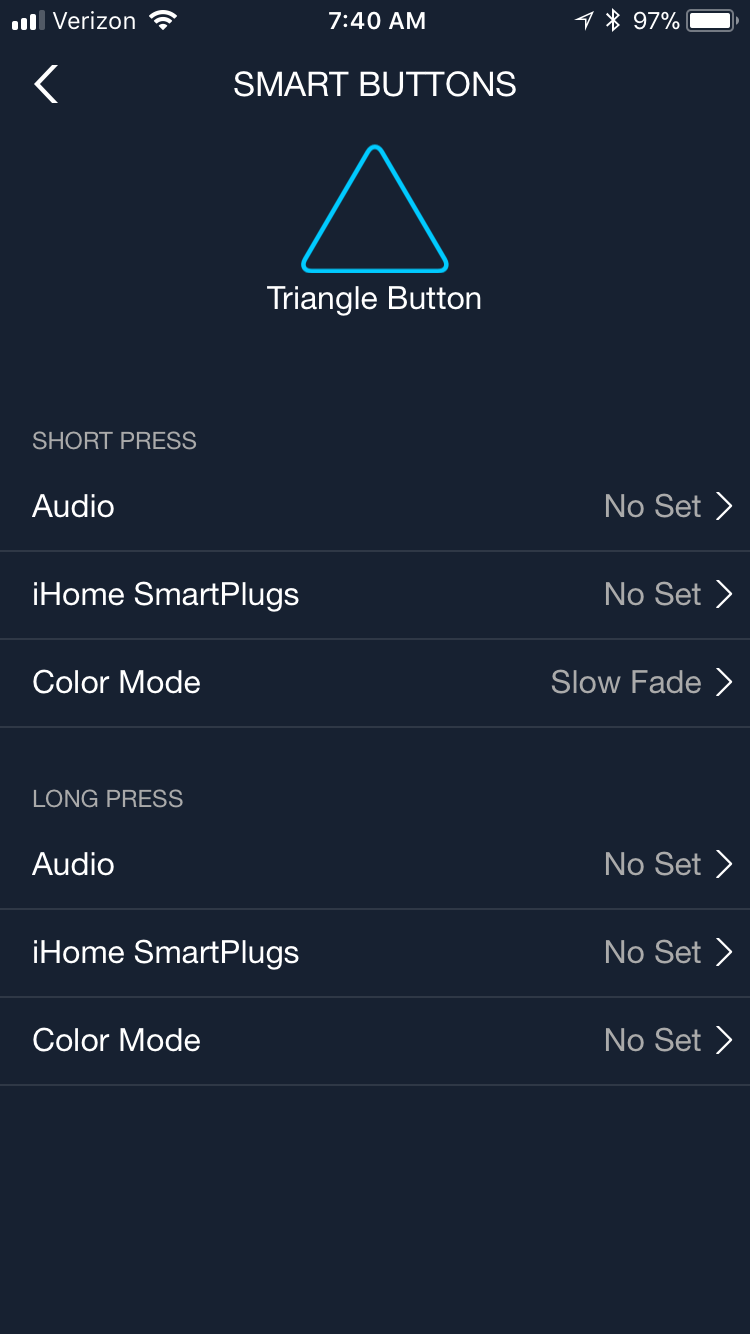
I like that the buttons let you control devices in your home, such as lights and fans, but there's a catch: They have to be plugged into an iHome smart plug. So that means you can't control your ceiling lights, for example, using this method.
Also, because the iHome is a third-party Alexa device, it can't do all the things an Alexa device made by Amazon can. For example, Alexa's drop-in feature doesn't work with the iHome, nor can you use Alexa to make phone calls.
One other annoyance? Even though I would turn the volume down on the speaker the night before, the next morning, I would wake up and ask Alexa a question, and she would respond at full volume, requiring me to once again lower the volume manually.
Bottom Line
Earlier this year, iHome released the iAVS1, a $49 clock into which you could dock an Amazon Echo Dot. However, its speakers were middling, and there were no alarm clock features in the clock itself.
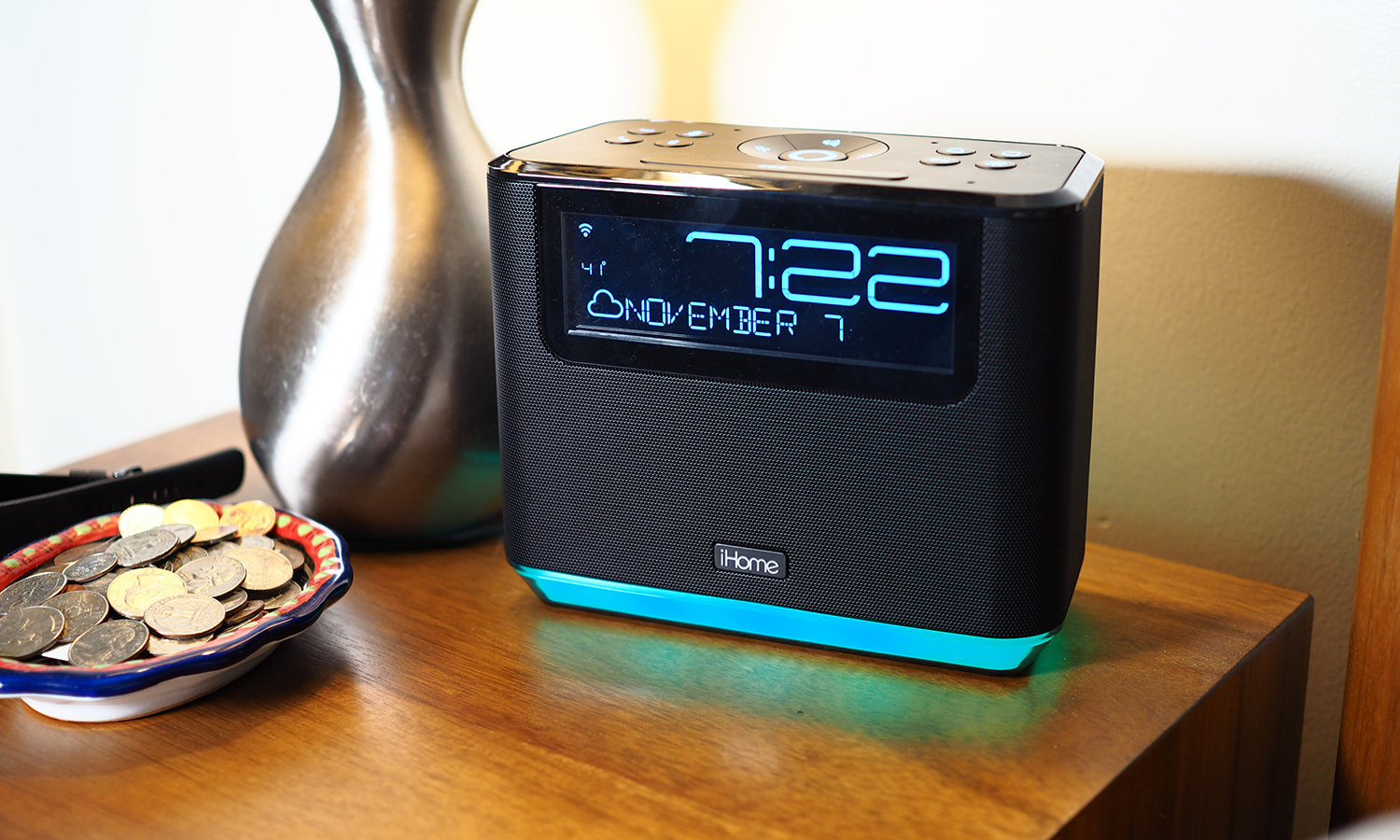
Though it costs $100 more, the iAVS16 is everything the earlier device should have been. It sounds great and integrates well with Alexa. It has a few quirks, but my chief complaint is that I wish its buttons could control more smart home devices. If you can live with that shortcoming — and its high price — the snooze control makes this device worth it. Now if you'll excuse me, I'm going back to bed.
Credit: iHome

Michael A. Prospero is the U.S. Editor-in-Chief for Tom’s Guide. He oversees all evergreen content and oversees the Homes, Smart Home, and Fitness/Wearables categories for the site. In his spare time, he also tests out the latest drones, electric scooters, and smart home gadgets, such as video doorbells. Before his tenure at Tom's Guide, he was the Reviews Editor for Laptop Magazine, a reporter at Fast Company, the Times of Trenton, and, many eons back, an intern at George magazine. He received his undergraduate degree from Boston College, where he worked on the campus newspaper The Heights, and then attended the Columbia University school of Journalism. When he’s not testing out the latest running watch, electric scooter, or skiing or training for a marathon, he’s probably using the latest sous vide machine, smoker, or pizza oven, to the delight — or chagrin — of his family.
